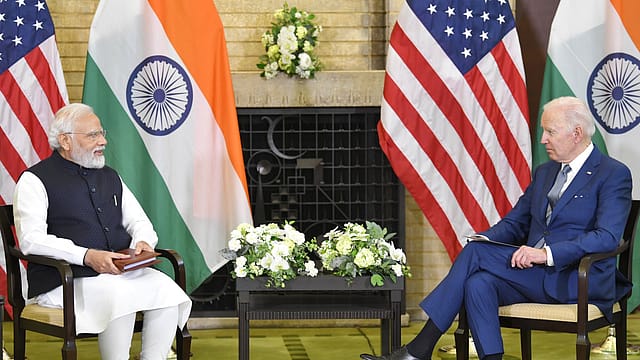India emerging as export powerhouse for U.S. firms: BCG
ADVERTISEMENT

India is among the emerging future export powerhouses for U.S. companies as the world's biggest economy looks to significantly cut imports from China, according to a report by Boston Consulting Group.
India, Mexico, and Southeast Asia are quickly emerging as export manufacturing powerhouses led by competitive cost structures, deep pools of labour, and growing scale and capabilities across diverse industries, the report titled 'Harnessing the Tectonic Shifts in Global Manufacturing' says.
India is rapidly developing as a producer of engines and turbines and has the additional benefit of possessing a potentially enormous domestic market, says BCG. First movers in such countries often gain the opportunity to establish capacity while labour, land, and other factors are abundant and very affordable, the report points out.
A given country's attractiveness will depend in part on its role in a particular product's value chain, according to the report. Some nations may be viable for final assembly but lack a competitive base of system and component suppliers. Others may be strong in key components but not in final assembly.
January 2026
Netflix, which has been in India for a decade, has successfully struck a balance between high-class premium content and pricing that attracts a range of customers. Find out how the U.S. streaming giant evolved in India, plus an exclusive interview with CEO Ted Sarandos. Also read about the Best Investments for 2026, and how rising growth and easing inflation will come in handy for finance minister Nirmala Sitharaman as she prepares Budget 2026.
The report highlights moderately high assembly costs and labour constraints as a constant worry in the U.S. "One option, which combines a quick lead time with improved resilience, would be to shift final assembly and systems to Mexico and components to Germany. These alterations could enable the manufacturer to deliver the engine or turbine 40% faster at a similar cost… A second option, which focuses on lowering costs, would be to shift assembly and procurement to India. The time to market would be slower here than in the Mexico-Germany option or in the status quo, but the potential cost savings range from 25% to 40%," the BCG report says.
Further trade-offs would include longer lead times, the need for significant investment in new production capacity, and the need to develop a supply base in India, it adds.
India's logistics infrastructure is unevenly developed, its environmental sustainability can be weak, and it has fewer free-trade agreements with nations other than the members of ASEAN, as per BCG.
"India is very cost competitive, however, and it has recently negotiated trade deals with Australia and the United Arab Emirates. Although India is just starting to emerge as a major exporter, it has a broad manufacturing base that supplies everything from electric vehicles and heavy machinery to chemicals and appliances for its domestic market," the report says.
From 2018 through 2022, U.S. goods imports declined by 10% from China, but rose 18% from Mexico, 44% from India, and 65% from the 10 countries of the Association of Southeast Asian Nations (ASEAN).
U.S. imports of mechanical machinery from China shrank by 28% from 2018 through 2022, but increased by 21% from Mexico, 61% from ASEAN, and 70% from India.
Despite its rising labour costs, China remains competitive, thanks to its current workforce availability, extensive supplier base, logistics infrastructure, and key role in certain industrial value chains, the report says. Southeast Asia is highly cost competitive, but it is far from North America and Europe, labour availability can be challenging, and sustainability is a concern, it adds.
